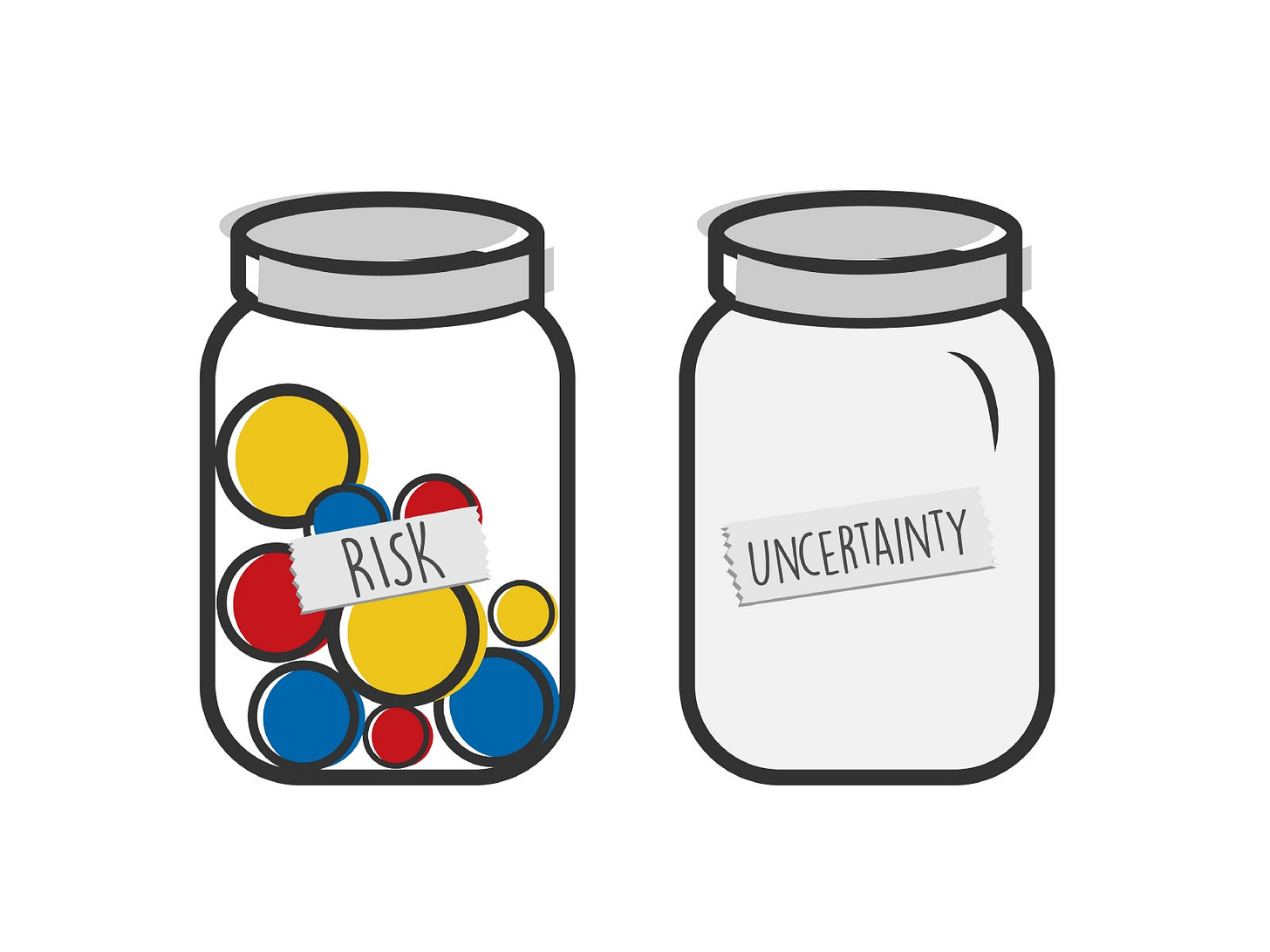#8 — Startups, Uncertainty, and the Innovator’s Dilemma
Hello and welcome to Weekend Reading Volume 8. A few things covered this week: risk, uncertainty, and exposed flanks.
The importance of moats has been a recurring theme of Weekend Reading. However, moats are the domain of established businesses. Economies of scale, network effects, and switching costs are attributes that are built over time. This post from venture capitalist Jerry Neumann explores how startups can succeed in the absence of traditional moats. More worryingly for established companies, it also argues that the same processes that have led to their success can also leave the vulnerable to being blindsided by an upstart. The meat of the argument is:
“Uncertainty is not just a nuisance startup founders can’t avoid, it is an integral part of what allows startups to be successful. Startups that aim to create value can’t have a moat when they begin, uncertainty is what protects them from competition until a proper moat can be built. Uncertainty becomes their moat.”
To understand why, it’s helpful to delineate risk from uncertainty. Here’s how Nate Silver defines risk in The Signal and the Noise:
“Risk…is something that you can put a price on. Say that you’ll win a poker hand unless your opponent draws to` an inside straight: the chances of that happening are exactly 1 chance in 11. This is risk. It is not pleasant when you take a “bad beat” in poker, but at least you know the odds of it and can account for it ahead of time.”
And here’s how he defines uncertainty:
“Uncertainty, on the other hand, is risk that is hard to measure. You might have some vague awareness of the demons lurking out there. You might even be acutely concerned about them. But you have no real idea how many of them there are or when they might strike. Your back-of-the-envelope estimate might be off by a factor of 100 or by a factor of 1,000; there is no good way to know. This is uncertainty.”

Risk can be measured and quantified, uncertainty cannot be. As Neumann notes, a company can mitigate risk by purchasing insurance or having a portfolio of projects. However, while businesses manage risk, they typically eschew uncertainty:
“Imagine walking into your boss’s office and presenting an investment rife with uncertainty. “How likely is this to succeed?” your boss asks. “I don’t know.” you say. “How big will it be if it works?” your boss asks. “I don’t know.” you say. “Why don’t you know?” “Because the customers may be different than who we think; because the customers may want a somewhat different product; because the other companies we need to produce complementary products may decide not to.” Etc. “Well,” your boss says, “we’ll just have to wait until we know those things before we can make a decision.” Unfortunately, these things and many others may be uncertain — meaning they can’t be known beforehand, the information does not yet exist. Your boss will never approve the project.”
This no doubt advances career self-preservation. Who wants to have their head on the chopping block when dealing with a project where estimates could be off by a factor of ten or ten thousand? But here’s the rub, high growth markets in tech start off as uncertain:
“Predicting the future of high-growth-potential businesses is much harder, and perhaps impossible, because these businesses: (1) are often doing something entirely new; and (2) must create a new system of connections between the company, the rest of their business ecosystem, and society in order to have the resources and support to grow quickly…The nature of high-growth potential tech businesses means that the most important drivers of their value creation must be uncertain.”
When confronted with uncertainty, the models, processes, and decision making apparatus that helped a company to previously succeed are kaput. As Clay Christensen points out in The Innovator’s Dilemma:
“Companies whose investment processes demand quantification of market sizes and financial returns before they can enter a market get paralyzed or make serious mistakes when faced with disruptive technologies. They demand market data when none exists and make judgments based upon financial projections when neither revenues or costs can, in fact, be known. Using planning and marketing techniques that were developed to manage sustaining technologies in the very different context of disruptive ones is an exercise in flapping wings.”
This paralysis is what gives startups the space to grow. So over time, the same thinking and decision making that got a company to be successful can expose its flanks to competition. Another reason why developing and deepening moats is critical.



